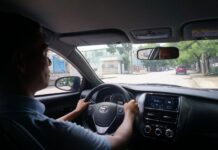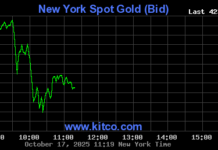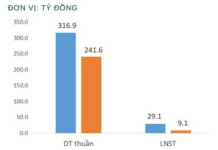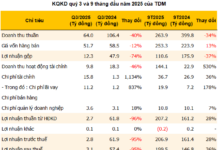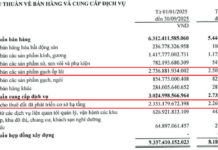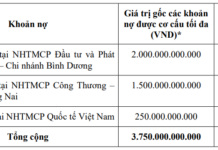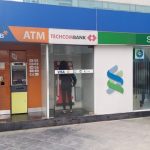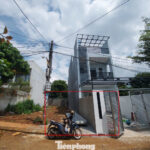At the workshop on “Solutions to protect customers using banking services” this morning (July 4), Deputy Governor Pham Tien Dung acknowledged that the issue of being unable to transfer money on the first day of implementing biometric authentication was real, but it has been gradually resolved in the following days, and is now basically stable and smooth. Customers without e-chipped ID cards have been guided and supported by banks when conducting transactions over VND 10 million.
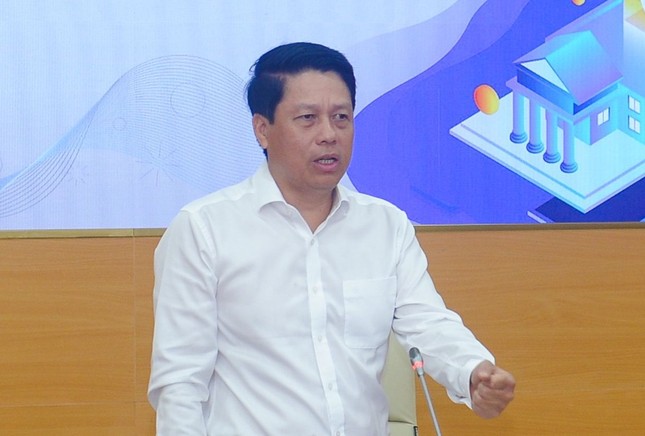
Mr. Pham Tien Dung, Deputy Governor of the State Bank of Vietnam.
According to Mr. Dung, the implementation of biometric authentication is necessary, adding an extra layer of protection and thus enhancing security. In case customers lose their documents, it would be difficult for criminals to impersonate them and commit fraud at the bank as facial recognition would be required for verification.
“Biometric authentication provides an additional layer of protection, and banks have not removed any security steps, so it is only safer for customers. High-tech crimes are becoming increasingly sophisticated, and I firmly believe that technology must continuously improve to better protect customers’ assets,” emphasized the Deputy Governor.
The State Bank of Vietnam’s leader added that as of 5 pm on July 3, 16.6 million bank accounts had been checked and cross-referenced with the Ministry of Public Security’s data to eliminate fake accounts not belonging to the actual owners, created with forged documents, etc.
“I have been in the banking industry for 33 years now. Currently, we have about 170 million bank accounts. Accordingly, the figure of 16.6 million accounts checked corresponds to the number of accounts opened by customers in the most effective year of the banking industry,” said Mr. Dung.
Mr. Dung also shared that on the first day Decision No. 2345 on the deployment of safety and security solutions in online and bank card payments took effect (July 1, 2024), the number of transactions at banks increased by 10-20 times compared to a normal day, causing transaction congestion at some banks. However, on July 2 and 3, transactions were basically smooth.
“This is a large-scale campaign. It is mandatory and cannot be otherwise,” said Mr. Dung. The State Bank has also requested banks to strictly implement anti-fraud measures, including countering deepfake technology and static image manipulation.
According to statistics from the State Bank of Vietnam, on average, there are about 1.8-2 million transactions worth over VND 10 million per day in the banking system. “The State Bank controls transactions on an hourly basis to detect abnormal transactions,” said the Deputy Governor.
Ms. Nguyen Thi Quynh Giao, Deputy General Director of BIDV, said that on the first day of implementing biometric money transfers, it was true that some people encountered difficulties and had to try up to 5 times before succeeding. However, the system gradually stabilized.
“We have 7,000 well-trained staff providing 24/7 support to customers through various channels. As of last night, over 1.7 million successful biometric authentications were recorded, including 166,000 collected at the counter,” said Ms. Giao.
Sharing the challenges in biometric money transfers, Mr. Nguyen Danh Duc, Deputy General Director of SHB, said that banks are trying to use technical measures to combat fraud and protect users. However, while these technical measures hinder criminals, they may also cause inconvenience to customers. This is a difficult balance for banks to strike, ensuring both security and a smooth payment experience for customers.
According to Decision No. 2345 of the State Bank, various types of online transactions of individual customers must apply facial biometric authentication from July 1, 2024. These include: initial activation of digital banking services or device change; money transfers over VND 10 million; transactions worth VND 10 million or less but with a total daily value of over VND 20 million; payments over VND 100 million; and foreign currency transfers and foreign exchange requests (regardless of transaction value).
Surge in QR Payments Leads to Bank ATM Closures
By the end of January 2024, the market witnessed a decrease of 1.70% in the number of ATMs compared to the same period in 2023, with a total of 20,986 ATMs. On the other hand, there was a significant increase of 32.68% in the number of POS machines, reaching a total of 554,580 POS. The month of January 2024 also saw a remarkable surge in QR code transactions, with a staggering increase of 892.95% in terms of quantity and an impressive 1,062.01% in terms of value.

